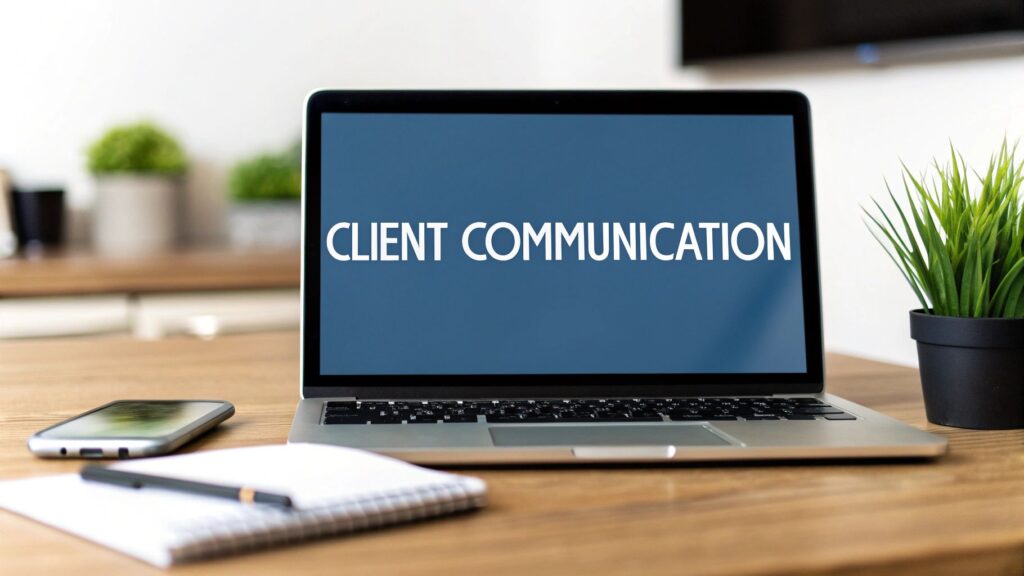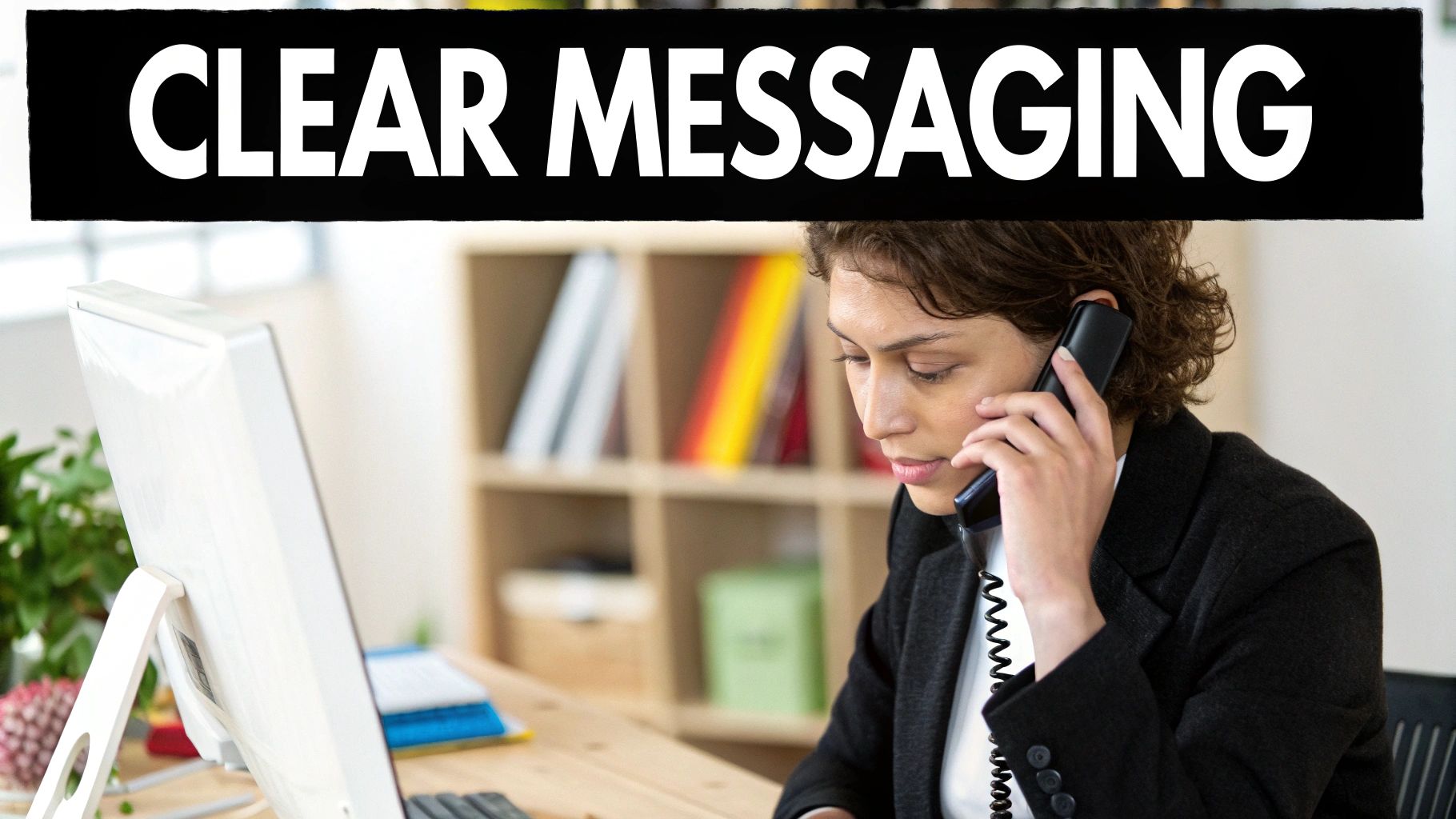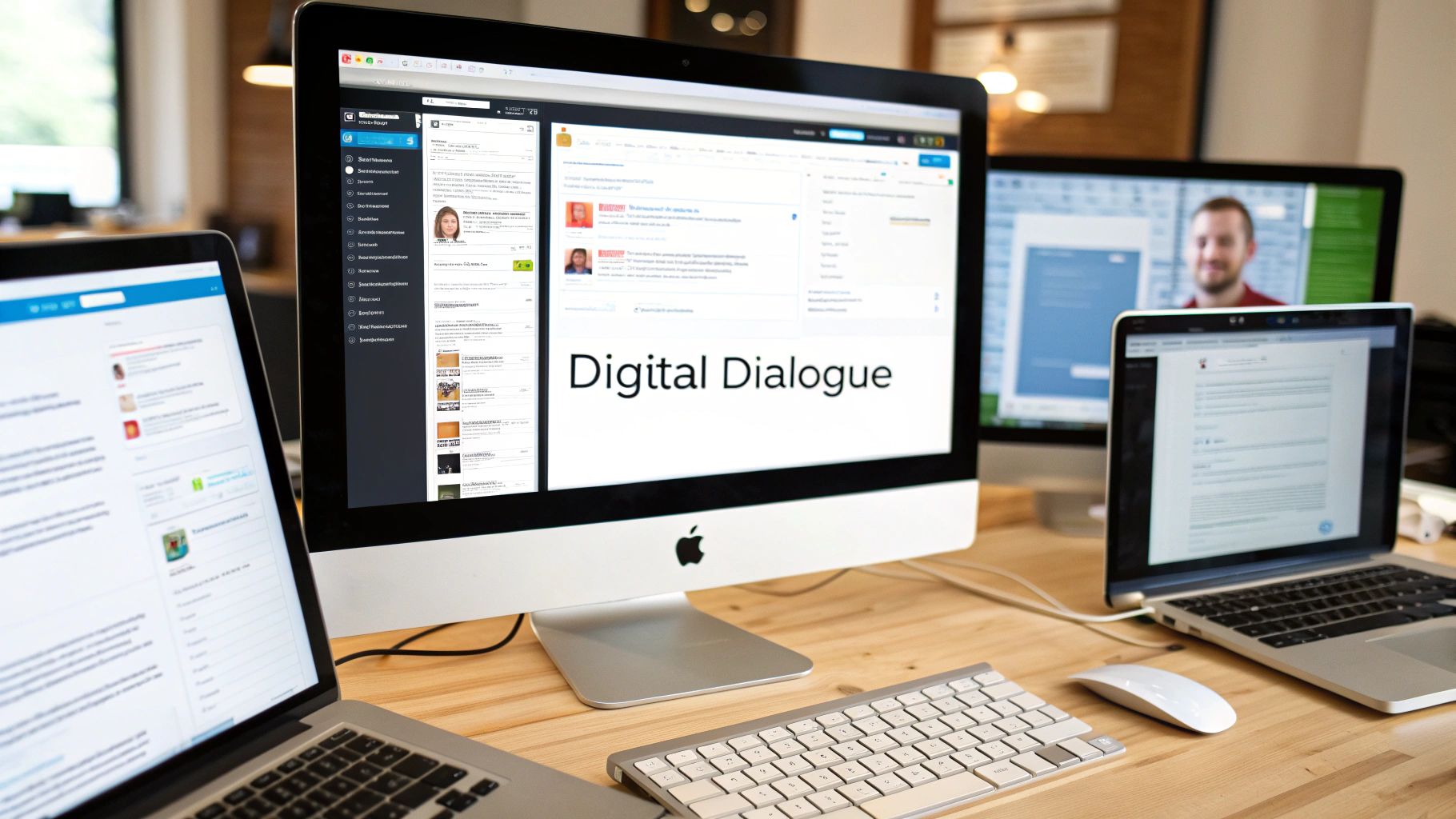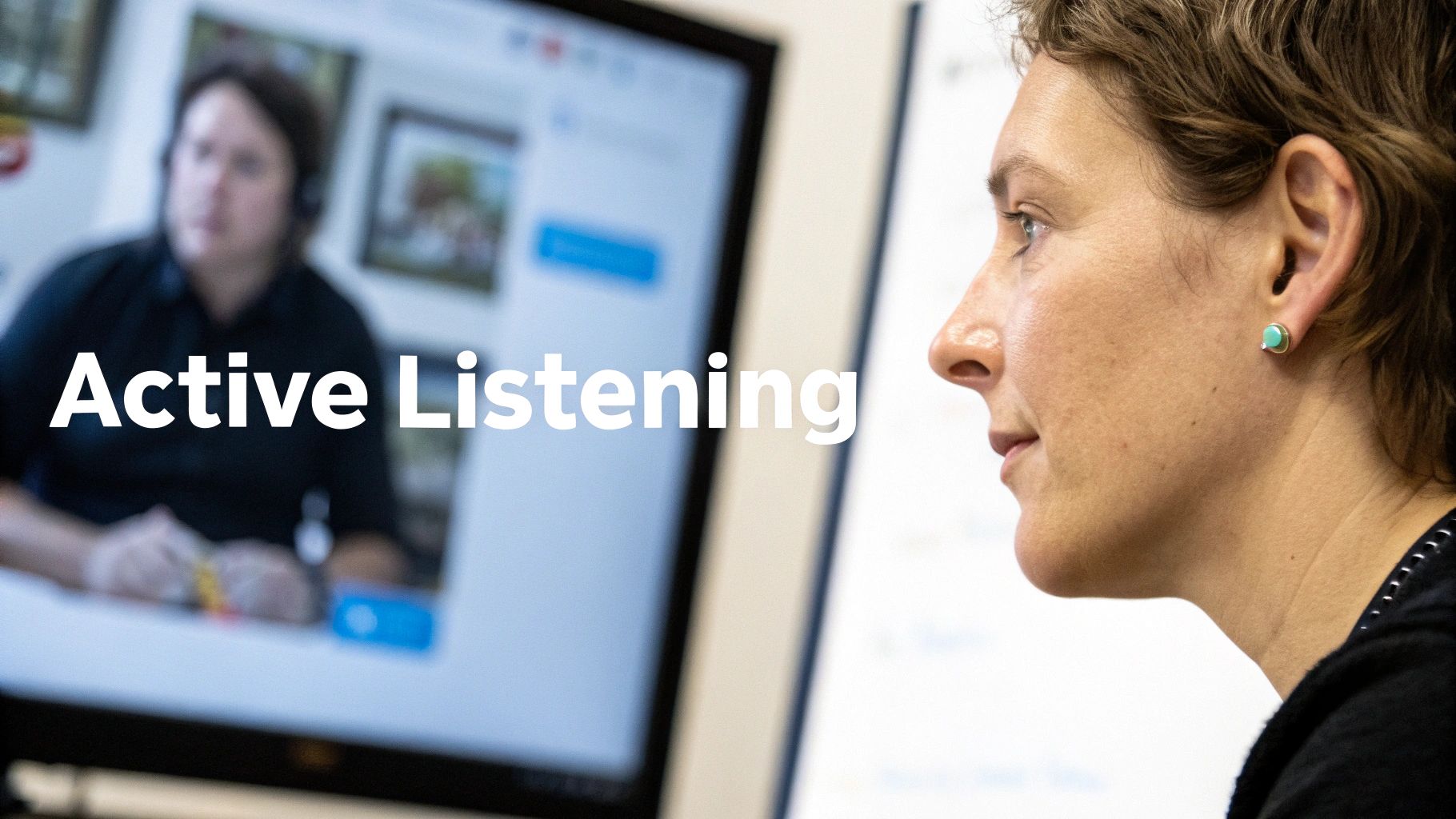
The Critical Impact of Client Communication on Business Success

Great client communication forms the foundation of successful business relationships. It goes far beyond basic interactions – it's about building genuine connections that lead to long-term partnerships. When you implement effective communication practices, you directly boost client satisfaction and retention while improving your company's performance.
Why Client Communication Matters
Good communication helps you truly understand what your clients need and address their concerns before they become issues. When clients feel heard and understood, they develop trust in your business and are more likely to stick with you long-term. Happy clients often become your biggest advocates, bringing in valuable referrals through word-of-mouth recommendations.
The numbers tell a clear story about the importance of client communication. Research shows that 96% of customers consider effective business communication essential. However, 95% say companies could improve how they communicate. Even more striking, 68% of people have switched to competitors due to poor communication – up 2% from last year. For more insights, check out these Workplace Communication Statistics.
Building Trust and Loyalty Through Communication
Strong client communication directly builds trust and loyalty. When clients know they can count on clear, consistent updates and responses from your team, they're much more likely to stick around. Simple things like prompt email replies and regular project updates make a big difference. On the flip hand, slow responses and unclear communication can quickly damage relationships and lead to lost business.
Transforming Challenges into Opportunities
Client complaints and issues don't have to be purely negative – they're chances to show your commitment to great service. By listening carefully to concerns, acknowledging problems directly, and working together on solutions, you can actually strengthen relationships during tough moments. This shows clients that you truly care about their success and are willing to put in the work to make things right.
Building a Multi-Channel Communication Strategy That Actually Works

Relying on just email isn't enough anymore. Modern clients want to connect through their favorite channels – whether that's WhatsApp, LinkedIn, Zoom calls, or traditional phone conversations. Creating a multi-channel communication strategy means bringing all these touchpoints together smoothly. But simply having multiple channels isn't the full story. What matters is delivering quality interactions consistently across every platform.
Choosing the Right Channel Mix
Start by understanding where your clients spend their time. Do they prefer quick text messages or longer phone calls? Your younger clients might love chatting through apps, while older ones may appreciate hearing your voice. The key is picking communication channels that match how your specific clients like to interact.
Maintaining Consistency Across Channels
Your brand's personality should shine through whether someone's reading your email, browsing your social media, or visiting your website. Think of it like cooking – each ingredient adds its own flavor, but they all need to work together to create a delicious meal. To avoid confusing clients with mixed messages, many businesses use centralized communication systems. This helps deliver a smooth experience across every channel your clients use. Check out more about customer communication management best practices.
Integrating and Automating Communication
Your communication channels should work as a team, not as separate players. When a client sends a Facebook message, you might set up an automatic email response followed by a personal phone call. This connected approach ensures every message gets proper attention. While automation helps handle routine tasks, remember to keep things personal. Your automated messages should feel warm and relevant, not robotic. Want to grow your client base? Here's how to master client acquisition. Finding the sweet spot between efficiency and personal touch is what makes multi-channel communication truly effective.
Measuring and Improving Communication ROI

For most companies, tracking the impact of client communications goes beyond looking at basic metrics. While email open rates provide some insight, the real value comes from measuring how your messages affect client relationships and business results. Here's a practical guide to measuring and improving your communication ROI.
Defining Key Performance Indicators (KPIs)
Start by setting clear goals for your communication efforts. Consider what specific outcomes you want to achieve:
- Higher client engagement levels
- Better customer satisfaction scores
- Increased conversion rates
- Stronger client retention
For instance, if you focus on keeping clients longer, track metrics like contract renewal rates or client lifetime value. This connects your communication work directly to business performance.
Combining Quantitative and Qualitative Data
Getting the full picture requires looking at both numbers and client feedback. Track quantitative metrics like:
- Website traffic from email campaigns
- Response rates to client outreach
- Sales connected to communication efforts
Balance this with qualitative insights from:
- Client satisfaction surveys
- One-on-one feedback conversations
- Social media sentiment
Learn more about effective measurement approaches in this guide from Cerkl on communication metrics.
Building a Feedback Loop
Make gathering client input an ongoing priority. Set up regular check-ins through:
- Quick pulse surveys
- Feedback forms after key interactions
- Direct conversations with clients
This creates a continuous feedback loop that helps you spot issues early and adjust your approach. For more tips on maintaining strong client relationships, check out this article on client retention best practices.
Calculating Communication ROI
While some benefits are hard to quantify, you can measure the financial impact of better communication:
- Track revenue increases from satisfied clients
- Calculate cost savings from reduced client churn
- Measure efficiency gains from clearer communication
- Monitor resources saved through improved processes
This data helps justify investments in communication tools and training by showing clear business value.
Creating Professional Communication Standards That Scale
Growing your business doesn't mean you have to compromise on client communication quality. Clear communication standards become essential as your team expands. This goes beyond basic templates – it's about creating systems that keep communications both professional and genuine while managing more client interactions.
Developing a Consistent Brand Voice
Your brand needs a clear personality in all client conversations. Creating tone guidelines helps your team stay consistent across every interaction. These guidelines should spell out what language to use, writing style, and the right tone for client messages. Does your brand speak casually and warmly, or maintain more formal professionalism? When you stay consistent, clients know what to expect and trust builds naturally.
Creating Response Frameworks
Picture a restaurant where each chef has their own recipe for the same dish. While variety can be nice, most people prefer consistency. The same goes for client messages – consistent responses matter. Response frameworks give your team approved language for common client questions, keeping everyone aligned. Think of it like a recipe that allows for personal touches while maintaining quality standards. For more insights, check out: How to master the client onboarding process.
Implementing Quality Control Measures
As your team grows, keeping communication quality high takes focused effort. Quality control works like having an editor review a book – fresh eyes catch mistakes and improve clarity. Put a review process in place for client communications to ensure everything meets your standards for professionalism, accuracy and tone. This could include peer reviews, manager sign-off, or automated checks for specific words and phrases.
Training for Effective Communication
Giving your team the right communication skills is crucial. Regular training should cover best practices for different channels, handling tough conversations, and adapting your brand voice for various situations. This investment leads to stronger client relationships and a more professional image. Remember to provide ongoing support through communication guides and internal resources. This gives your team the confidence to handle any client interaction effectively.
Mastering Difficult Conversations and Conflict Resolution

Even when following best practices for client communication, challenging conversations will come up. Rather than seeing these as problems, approach them as chances to build stronger client relationships and show your dedication to their goals. Let's explore practical ways to handle these situations professionally.
Understanding the Root Cause
Before jumping into problem-solving mode, take time to identify what's really causing the issue. A client might be upset about a missed deadline, but the real problem could be poor communication on your end. Getting to the heart of the matter helps prevent similar problems from happening again.
Effective Communication Techniques for Difficult Conversations
- Active Listening: Put your full attention on understanding the client's perspective. Repeat back what you hear to confirm you've got it right and show you care. Set aside your assumptions and focus entirely on their message.
- Show You Care: Acknowledge how the client feels, even if you see things differently. Simple phrases like "I understand this is frustrating" can help calm tense situations.
- Focus on Solutions: Move the discussion away from blame and toward fixing the problem together. Ask the client to help brainstorm solutions – this builds a real partnership.
Delivering Unwelcome News
Sometimes you need to share news that will disappoint the client. Be direct but caring – explain clearly what happened, why it happened, and what you're doing to fix it. If possible, come prepared with alternative options. This approach helps maintain trust even when sharing difficult updates.
Maintaining Composure Under Pressure
Client conversations can get heated. The key is staying professional no matter how frustrated the client becomes. Take deep breaths, keep your voice steady, and avoid getting defensive. When you stay calm, it helps the client calm down too and leads to better problem-solving.
Utilizing Frameworks and Templates
Create standard approaches and messaging for common challenging situations. This gives your team approved language and strategies to use, ensuring everyone handles tough conversations consistently and professionally. Templates are especially helpful for:
- Addressing frequent complaints
- Managing refund requests
- Communicating about delays
- Responding to dissatisfied clients
Having these resources ready helps your team navigate difficult conversations while keeping client relationships positive. Just remember to personalize the templates for each situation rather than using them word-for-word.
Using Tech to Build Better Client Relationships
Modern tools make it easier than ever to stay connected with clients. But with so many options available, choosing the right tools requires careful thought. The goal is to use technology to strengthen real human connections, not replace them. Here's how successful companies blend automated systems with authentic personal engagement.
Finding the Perfect Tools for Your Needs
When evaluating communication tools, start by understanding your clients' preferences. Some may prefer quick text messages while others value face-to-face video calls. Here are the key factors to consider:
- Simple to Use: Both your team and clients should find the tool intuitive and straightforward
- Works with Current Systems: The tool should integrate smoothly with your existing software for client management and projects
- Room to Grow: Choose options that can handle increased volume as your client base expands
- Strong Security: Protecting client information must be a top priority with robust security features
Rolling Out New Technology
A thoughtful implementation plan is crucial for success with new tools. Start by clearly defining what you want to achieve – whether that's faster response times, better engagement, or smoother collaboration. Then create a step-by-step plan to introduce the technology gradually, giving everyone time to adjust and learn.
Keeping It Personal in a Tech-Driven World
While automation helps with routine tasks, genuine human connection remains essential. Use technology to free up time for meaningful conversations, not to replace them entirely. For example, automated scheduling tools can create more space for quality video calls or in-person meetings that build stronger relationships.
Success Stories: Tech that Works
Many businesses are finding the right balance. Consider a financial advisor using a secure portal to share custom reports while maintaining regular personal check-ins. Or a marketing team using project tracking software to keep clients updated while still having meaningful strategy discussions. These examples show how technology can improve transparency and efficiency while maintaining the human touch.
Ready to improve your client relationships? Visit Jason Yormark to discover practical strategies and resources for growing your business.


Leave a Reply